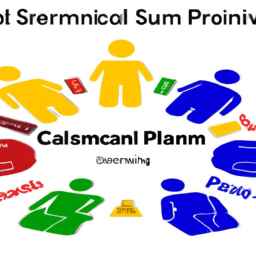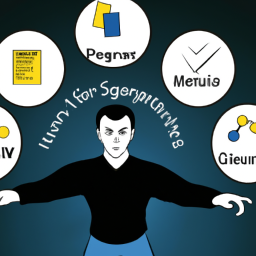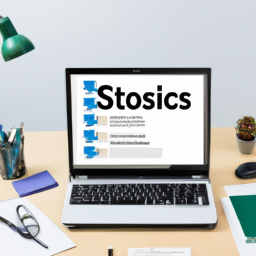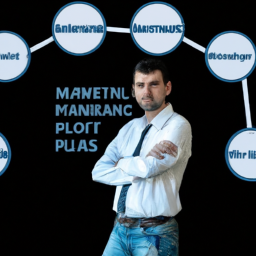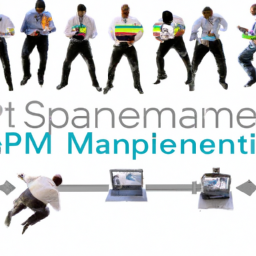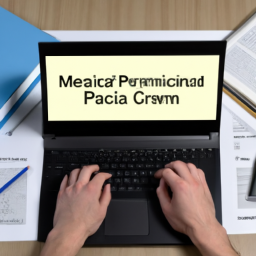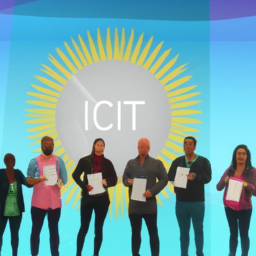Are you ready to take your Scrum skills to the next level?
Get ready to ace the PSM II exam with these 10 expert tips.
From understanding the exam structure to mastering Scrum events and artifacts, this article will guide you through each step of the preparation process.
With a focus on concise and organized writing, you’ll gain the knowledge and confidence needed to succeed.
So, let’s dive in and get you fully prepared for the PSM II exam!
Key Takeaways
- Focus on studying the Scrum Guide
- Practice applying Scrum in real-life scenarios
- Utilize practice exams and study guides for assessment and improvement
- Understand the roles, responsibilities, events, and artifacts in Scrum
Understand the PSM II Exam Structure
To ace the PSM II exam, it’s crucial to understand its structure. The PSM II exam is designed to test your knowledge and understanding of Scrum principles and practices at an advanced level.
To prepare for this exam, you should focus on studying the Scrum Guide and deepening your understanding of the Scrum framework. Familiarize yourself with the different roles, artifacts, and events in Scrum, and how they interact with each other.
It’s also important to practice applying Scrum in real-life scenarios through case studies and simulations. Additionally, make use of resources such as practice exams and study guides to assess your knowledge and identify areas for improvement.
Familiarize Yourself With Scrum Framework and Principles
Start by familiarizing yourself with the Scrum framework and its principles. The Scrum framework is a popular Agile methodology used in project management. It provides a structured approach to managing complex projects by breaking them down into smaller, manageable tasks.
Scrum is based on a set of principles that emphasize collaboration, adaptability, and continuous improvement. Understanding these principles is crucial for success in the PSM II exam.
The Scrum framework overview entails knowing the different roles, events, and artifacts involved in Scrum. By understanding the Scrum principles, such as transparency, inspection, and adaptation, you will be able to apply them effectively in your exam preparation.
Now that you have a grasp of the Scrum framework and principles, let’s delve deeper into the roles and responsibilities within Scrum.
Deepen Your Knowledge of Scrum Roles and Responsibilities
Let’s explore the different roles and responsibilities within Scrum to deepen our knowledge.
In Scrum, there are three main roles: the Scrum Master, the Product Owner, and the Development Team.
The Scrum Master is responsible for facilitating the Scrum process and ensuring that the team follows Scrum principles.
The Product Owner is responsible for prioritizing and managing the product backlog.
The Development Team is responsible for delivering the product increment.
Each role plays a crucial part in the Scrum framework, and understanding their responsibilities is essential for successful Scrum implementation strategies.
By utilizing agile project management techniques, such as regular meetings and continuous feedback, Scrum teams can effectively collaborate and deliver high-quality products.
Now, let’s dive into the next section to explore the master Scrum events and artifacts.
Master Scrum Events and Artifacts
Now that you understand the roles and responsibilities in Scrum, it’s time to delve into the master Scrum events and artifacts. Here are some expert tips to help you navigate through scrum event planning and scrum artifact management:
-
Sprint Planning: This event marks the beginning of each sprint, where the team collaboratively plans the work to be completed. Make sure to involve all team members and prioritize the backlog items.
-
Daily Scrum: This short, daily meeting allows the team to synchronize their activities and plan for the day ahead. Keep it focused and encourage team members to share progress, challenges, and dependencies.
-
Sprint Review: At the end of each sprint, the team presents the completed work to stakeholders. Use this event to gather feedback and identify potential improvements for the next sprint.
-
Sprint Retrospective: This event provides an opportunity for the team to reflect on their work processes and make adjustments. Encourage open and honest communication to foster continuous improvement.
Learn Agile Product Development and Release Planning
In this section, you’ll dive into the world of Agile release planning techniques and product development best practices.
You’ll learn how to effectively plan and execute releases using Agile methodologies, ensuring that your products are delivered on time and with high quality.
Additionally, you’ll explore the best practices for product development. This includes how to prioritize and manage requirements, collaborate with stakeholders, and continuously improve your products.
Agile Release Planning Techniques
To better understand Agile Release Planning Techniques, you’ll need to familiarize yourself with various approaches and tools. Here are four key techniques to consider:
-
Agile Release Management: This technique focuses on breaking down the project into smaller, manageable releases. It involves prioritizing features based on customer value and market demand, allowing for faster delivery and feedback loops.
-
Sprint Planning Techniques: In sprint planning, the team identifies the work to be done in the upcoming sprint. Techniques like user story mapping, task breakdown, and estimation help in creating a clear plan. This enables the team to deliver high-quality increments within the sprint timeline.
-
Agile Release Trains: This technique aligns multiple teams working on a project towards a common goal. It ensures synchronized planning, coordination, and integration of work across teams, resulting in faster and more reliable releases.
-
Continuous Integration and Deployment: This technique focuses on automating the process of integrating and deploying code changes. By constantly integrating and deploying code, teams can catch and fix issues early, resulting in faster and more frequent releases.
Product Development Best Practices
One of the most effective ways to ensure success in product development is by implementing best practices. Product development challenges can be mitigated by adopting agile project management methodologies.
Agile project management emphasizes flexibility, collaboration, and iterative development, enabling teams to respond quickly to changing requirements and deliver high-quality products. By following best practices such as continuous integration, frequent communication, and transparent documentation, organizations can streamline their product development processes and overcome common challenges such as scope creep, resource constraints, and ineffective communication.
Agile project management also promotes cross-functional teams and regular feedback, enabling faster decision-making and reducing the risk of delays or misunderstandings. Incorporating these best practices into your product development approach will increase the likelihood of successful outcomes and drive innovation within your organization.
Explore Agile Leadership and Team Dynamics
Agile leadership and team dynamics play a crucial role in the success of any project. As an agile leader, you must be aware of the challenges that can arise and take proactive steps to overcome them. Here are four essential aspects to consider when it comes to agile leadership and effective team collaboration:
-
Clear Communication: Encourage open and transparent communication within the team. Ensure that everyone understands the project goals, tasks, and expectations.
-
Empowerment: Foster a culture of trust and empowerment, where team members feel valued and have the autonomy to make decisions.
-
Collaboration: Promote collaboration by creating opportunities for team members to share ideas, solve problems together, and learn from each other’s expertise.
-
Continuous Improvement: Embrace a mindset of continuous improvement by regularly assessing the team’s performance, identifying areas for growth, and implementing changes to enhance productivity and efficiency.
By focusing on these aspects, you can effectively lead your team and foster a collaborative environment.
Transitioning to the next section, let’s explore how to practice scrum master coaching and facilitation techniques.
Practice Scrum Master Coaching and Facilitation Techniques
In this discussion, you’ll explore effective facilitation techniques and learn how they can enhance your role as a Scrum Master.
You’ll also delve into the art of coaching for team success and discover strategies to support and guide your team towards achieving their goals.
Effective Facilitation Techniques
To effectively facilitate discussions during the PSM II exam, you should focus on creating a collaborative and inclusive environment. This is especially important when working with remote teams, as effective communication strategies are crucial.
Here are four facilitation techniques that can help you succeed:
-
Establish clear guidelines: Set expectations for participation, time management, and respectful communication. This will ensure everyone understands the ground rules and can contribute effectively.
-
Use visual aids: Visuals help remote teams understand complex concepts and stay engaged. Utilize tools like virtual whiteboards or screen sharing to enhance the clarity of your message.
-
Encourage active participation: Create opportunities for everyone to contribute, such as asking open-ended questions or using breakout rooms for smaller group discussions. This fosters a sense of ownership and engagement.
-
Foster a supportive environment: Encourage team members to listen actively and provide constructive feedback. Create a safe space where everyone feels comfortable sharing their thoughts and ideas.
Coaching for Team Success
You can enhance team success by coaching team members to reach their full potential and work together effectively.
Team collaboration and effective communication are key components of a high-performing team. As a coach, you play a crucial role in facilitating these aspects.
Start by promoting a collaborative environment where team members feel comfortable sharing ideas and working together towards common goals. Encourage open and honest communication, ensuring that everyone has a chance to express their thoughts and concerns.
Help team members improve their communication skills by providing constructive feedback and offering guidance on active listening, clarity, and empathy.
Understand Scrum in Large and Complex Projects
Understanding Scrum in large and complex projects can be challenging, but it is essential for success on the PSM II exam. Here are four key things to keep in mind when navigating the intricacies of Scrum implementation in such projects:
-
Identify the challenges: Large and complex projects often come with their own set of unique hurdles, such as coordination issues, increased dependencies, and scaling challenges. Recognizing these challenges is the first step towards addressing them effectively.
-
Adapt the Agile framework: Scaling Agile is crucial in such projects. Explore frameworks like SAFe or LeSS to help structure and manage the work across multiple teams. Tailor the Scrum framework to fit the specific needs of your project, ensuring seamless collaboration and efficient delivery.
-
Establish clear roles and responsibilities: With more moving parts, it’s important to define roles and responsibilities clearly. Assign Product Owners, Scrum Masters, and development teams to ensure smooth communication and decision-making.
-
Embrace transparency and continuous improvement: Large projects require constant monitoring and adjustments. Foster a culture of transparency, where everyone has access to information and can provide feedback. Regularly inspect and adapt your processes to optimize delivery.
Understanding Scrum in large and complex projects is a crucial skill to master for the PSM II exam. Now, let’s dive into studying Scrum in distributed teams and organizations.
Study Scrum in Distributed Teams and Organizations
Embracing collaboration and effective communication is key when studying Scrum in distributed teams and organizations. In today’s remote work environment, virtual collaboration has become increasingly important.
When studying Scrum in distributed teams, it is crucial to establish clear lines of communication and ensure that everyone is on the same page. Utilize tools and technologies that facilitate remote collaboration, such as video conferencing, instant messaging, and project management software.
Regularly scheduled meetings and daily stand-ups can help keep everyone informed and connected. It is also essential to foster a culture of transparency and trust within the team. Encourage open and honest communication, and provide opportunities for team members to share their ideas and concerns.
Take Practice Exams and Review Your Weak Areas
To improve your performance on the Scrum exam, it’s important to take practice exams and thoroughly review areas where you feel less confident. Here are some practice exam strategies and weak area analysis tips to help you prepare effectively:
-
Start by taking a full-length practice exam to get a sense of the exam format and time constraints.
-
Identify your weak areas by reviewing the questions you struggled with and noting any patterns or recurring topics.
-
Focus on one weak area at a time and allocate dedicated study time to understand the concepts and principles thoroughly.
-
Utilize additional resources such as study guides, online tutorials, or group discussions to reinforce your understanding and clarify any doubts.
Frequently Asked Questions
How Long Is the PSM II Exam?
The PSM II exam duration is 120 minutes with a time limit of 2 hours.
It is important to manage your time wisely to ensure you have enough time to answer all the questions.
Make sure to read each question carefully and avoid spending too much time on difficult ones.
Prioritize your time and focus on answering the questions you are confident about first.
Remember to pace yourself throughout the exam to maximize your chances of success.
What Is the Passing Score for the PSM II Exam?
The passing score for the PSM II exam is 85%.
It is important to understand the exam duration as well. The exam consists of multiple-choice questions and you will have 90 minutes to complete it.
To achieve the passing score, it is recommended to thoroughly study the Scrum Guide and practice applying the principles in real-world scenarios.
Additionally, taking practice exams and seeking guidance from experienced Agile professionals can greatly enhance your chances of success.
Are There Any Prerequisites to Taking the PSM II Exam?
Before diving into the 10 expert tips for the PSM II Exam, let’s address the question of prerequisites.
Good news! There are no specific prerequisites to take the PSM II Exam. However, it’s important to note that this exam is designed for experienced Scrum Masters who have a deep understanding of Scrum principles, practices, and frameworks.
Can the PSM II Exam Be Taken Online or Is It Only Available In-Person?
The PSM II exam can be taken online or in-person, giving you the flexibility to choose the option that works best for you.
Taking the exam online offers several benefits, such as convenience and accessibility. It allows you to take the exam from the comfort of your own home or office, saving you time and travel expenses.
Additionally, online exams often provide immediate results, so you can receive your score and feedback quickly.
How Much Does It Cost to Take the PSM II Exam?
To register for the PSM II exam, you’ll need to pay the exam fees. The cost of the exam varies depending on your location and the exam provider.
It’s recommended to check the official Scrum.org website for the most up-to-date information on exam fees and the registration process.
Make sure to plan your budget accordingly and complete the registration process to secure your spot for the PSM II exam.
Conclusion
So, you think you’re ready to tackle the PSM II exam? Well, after following these expert tips, you may just surprise yourself.
You’ve deepened your knowledge of Scrum, mastered coaching techniques, and studied Scrum in various contexts. You’ve taken practice exams and reviewed your weak areas.
But here’s the ironic twist – despite all your preparation, the PSM II exam will still challenge you. So, keep calm, stay focused, and remember that true growth comes from facing those unexpected hurdles.
Good luck!





